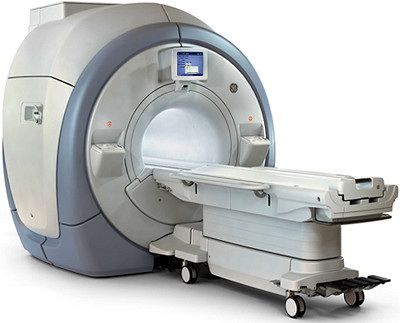Magnetic Resonance Imaging (MRI)
Magnetic resonance imaging (MRI) is a test that uses a magnetic field and pulses of radio wave energy to make pictures of organs and structures inside the body. In many cases, MRI gives different information about structures in the body than can be seen with an X-ray, ultrasound, or computed tomography (CT) scan.

Importance of MRI
MRI imaging provides a unique view into the interior of the human body and has become an essential tool of modern medical imaging and disease diagnosis. In many cases, MRI provides important diagnostic information that cannot be obtained with other imaging techniques.
MRI is particularly useful for:
- Examining the brain, neck and spinal cord
- Identifying bone and joint damage
- Revealing brain abnormalities in people with Alzheimer’s Disease and dementia
- Helping with the diagnosis of central nervous system disorders, like multiple sclerosis and strokes
- Detecting breast cancer and damage to soft tissues
- Evaluating blood vessels to detect areas of blockage
MRI has proven itself as an invaluable tool for the last 20 years, and Main Line Health Imaging radiologists are confident that advancing technology will find new applications for this important diagnostic resource.
Walang komento:
Mag-post ng isang Komento